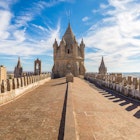
Oct 29, 2025 • 5 min read
Kaleidoscopic tropical fish, spectacular coral reefs and year-round warm waters make the Caribbean one of the best places for snorkeling.

Oct 29, 2025 • 5 min read
Kaleidoscopic tropical fish, spectacular coral reefs and year-round warm waters make the Caribbean one of the best places for snorkeling.

Oct 29, 2025 • 5 min read
A shining cultural symbol of Argentina, the musical style and dance of tango was born in (and remains alive and well) in Buenos Aires.

Oct 29, 2025 • 7 min read
There’s nothing quite like the restorative high from a dip in a proper thermal pool. Add to this year's travel roster these incredible European hot springs.

Oct 29, 2025 • 9 min read
From getting to the Mamanucas to exploring the rugged landscape of Viti Levu, here are the best day trips.

Oct 28, 2025 • 5 min read
Come winter, Utah delivers epic snow. Excellent for skiers and riders of all levels, these resorts offer a great day on the hill with unbeatable amenities.

Oct 28, 2025 • 6 min read
Our writer shares his tips for fraternizing with the locals while eating food that tastes like your nonna made it.

Oct 28, 2025 • 8 min read
Plan your Mt Whitney hike with this guide to route options, trail conditions, permits and gear.

Oct 28, 2025 • 7 min read
There’s much more to Den Haag (The Hague) than meets the eye.

Oct 28, 2025 • 8 min read
Auckland is a big little city of natural beauty and cultural diversity – catch all its waterfront views, fusion dining and top sights.

Oct 28, 2025 • 6 min read
Experience the best of Fiji's landscapes with these top hiking routes.

Oct 28, 2025 • 6 min read
Plan a magical trip to Portugal with our top tips on transport, safety and etiquette.

Oct 28, 2025 • 7 min read
These cities promise an unforgettable New Year's Eve experience on December 31 and into January 1.

Oct 28, 2025 • 3 min read
Lonely Planet caught up with Gronk to talk about his recent RV escapades, his favorite travel snacks and a once-in-a-lifetime trip he still dreams about.

Oct 28, 2025 • 10 min read
Whether you want to explore in Alta Badia or check out volcanic views at Mt Etna, Italy offers top spots for skiers and snowboarders.

Oct 27, 2025 • 13 min read
These unique properties aren’t just cool places to lie your head after a big day of driving – they make the journey even more memorable.

Oct 27, 2025 • 5 min read
Plan your trip to Queenstown, New Zealand's center of adventure, with this seasonal guide.

Oct 27, 2025 • 8 min read
Just as lovely as the trip to Queenstown, are the day trips at your fingertips from this incredible base camp.

Oct 27, 2025 • 11 min read
You can visit fascinating temples, taste delicious cuisine and even climb a sticky waterfall. Here are the top things to do in Chiang Mai.

Oct 27, 2025 • 6 min read
How can you pick between the iconic markets in Cologne and Nuremburg? Two locals fight it out for the crown.

Oct 26, 2025 • 7 min read
Here's everything you need to know for your underwater adventures, from where to go, to where to stay, to what to pack, and more.

Oct 26, 2025 • 10 min read
Use your love for Buffalo wings to create a culinary itinerary that gives you a taste everything the city of Buffalo has to offer.

Oct 26, 2025 • 4 min read
Plan your visit to Portugal with our seasonal guide to climate, crowds and events.